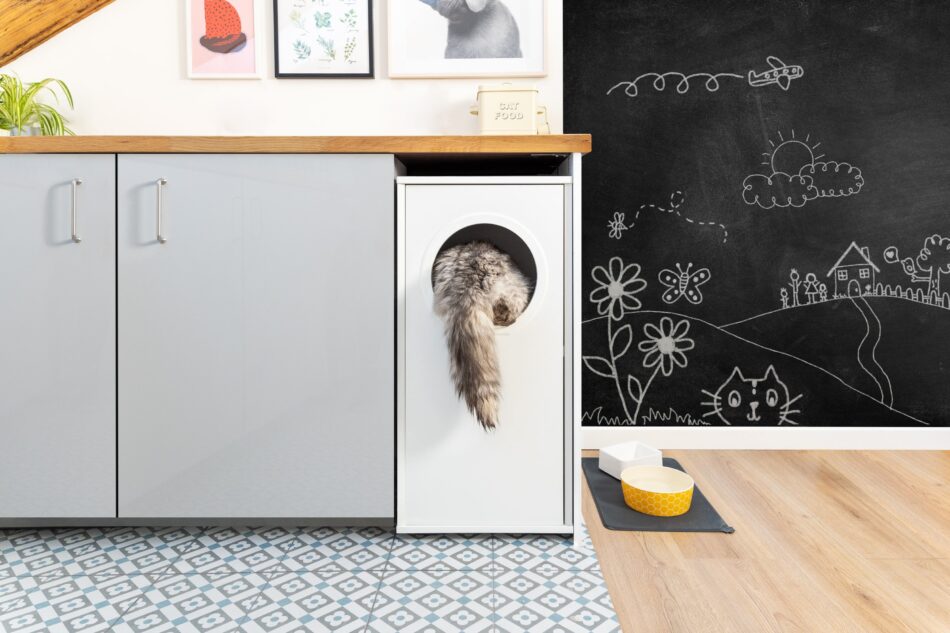How to Litter Train a Cat
Most cats don’t need much persuading to use a litter tray. This makes training a straightforward process, and the key detail is the tray itself.
A litter tray needs to be large enough to accommodate your cat comfortably while it’s using the facilities. It also needs to be placed in a suitable spot. Cats feel vulnerable when they’re relieving themselves, and will not use a litter tray in a busy part of the house. A quiet corner is what they need – but it should be away from the feeding area, as cats, like humans, do not like their eating and toileting activities to be in the same space!
The cat litter itself is not usually an issue. All the available brands do the job. The advantage that shop-bought products have over plain sandy soil is that they are super-absorbent, and don’t stick to the cat’s feet. It is best to avoid perfumed or deodorizing litter, unless the additives are all natural. Chemical perfumes can cause allergic reactions in some cats.
Basic Litter Training
A young kitten with a weak bladder – or a stressed rescue cat – may take time to get the hang of litter trays, but it is rare for a cat to fail this basic training course!
- Make sure the tray is big enough. If in doubt, get the biggest one you can. This will accommodate the growing cat, and the tray will not seem ‘full’ after a couple of visits. If the cat thinks the litter is too soiled, it will not want to enter the tray.
- If your cat is particularly shy, a covered tray is the best option, as these give more sense of privacy.
- If you have more than one cat, it is recommended that you should have one tray per cat. This prevents problems if the pets fall out or decide they’re not going to poo where another cat has just pooed!
- Remove the solid waste from the tray each day, and thoroughly wash it – and replace the litter completely – at least once a week. If the tray starts to smell too unpleasant, the cat will be tempted to relieve itself elsewhere else.
- In the early days, timing is important. A kitten will usually need to relieve itself after playing and after eating. When a young kitten has finished eating, carry it to the litter tray. A few sniffs and a bit of litter-pawing will often stimulate the desired response. You can also play with your kitten next to the litter box, ready to lift her onto the tray when play has ended.
- Lead by example. Not by actually using the tray yourself, of course, but by pawing the litter with your finger. Don’t take the cat’s paw and force it to dig, though, as this can be stressful and may even lead to litter phobia, which is definitely not what you want.
- If accidents happen outside the litter tray, put the droppings in the tray as a prompt for the cat.
- Be patient, never shout at the cat if it’s taking a little time to get the hang of it, lavish praise and affection on a successful litter-visit, and once your pet knows what to do, just quietly leave her to it.
Litter Training Problems
If the cat is resistant to the idea of using the tray and continues to use other parts of the house as the toilet, one effective deterrent is to move the cat food bowl to the place where the accident happened. Cats do not like mixing and matching their food and toilet, so this should help her move on to the more appropriate facilities.
If the message is still not getting through, confining the cat to a spare room may do the trick. With the litter tray at one end and the food and water bowl at the other, it would be a very perverse cat indeed who did not get the message. It may sound a little like a prison, but as long as the room isn’t too hot or cold, the cat will feel secure. You can visit for playtimes too, of course, and the need for confinement will usually be over in a couple of days.
Cats that persistently refuse to use a litter tray may be stressed by something in their environment. This could be other cats, a dog, noisy children, or the simple fact that the tray is not in a suitable location. There are occasionally health-related issues that make a cat ‘miss’ the tray, too, so that’s worth checking out if you’re not making progress with the training.
Otherwise, litter training a cat is simplicity itself.
This entry was posted in Cats

